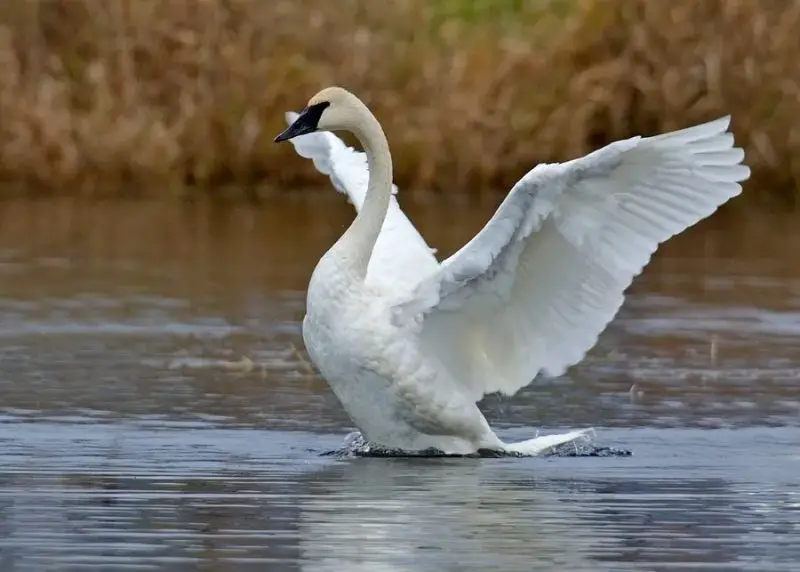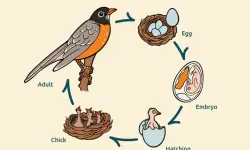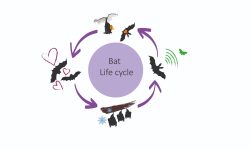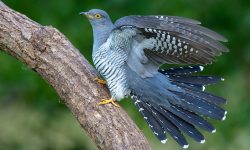California’s wetlands, floodplains, and seasonal marshes offer essential stopovers for migrating birds and year-round havens for waterfowl. Among the most majestic of these are swans—large, elegant birds whose presence transforms the landscape into something out of a painting.
In California, three swan species can be seen: the Tundra Swan, the Trumpeter Swan, and the Mute Swan. While they all share the same snowy plumage and graceful appearance, each has a distinct origin, behavior, ecological role, and conservation story.
Understanding how to distinguish and observe these species is not just a joy for birdwatchers but also a window into the health of our wetlands. Let’s explore each swan in depth across five essential aspects: identification, habitat in California, seasonal presence, ecological role, and how best to observe them in the wild.
Tundra Swan (Cygnus columbianus)

Identification
Tundra Swans are medium-sized with snow-white feathers, long necks, and straight black bills. Many have a small yellow spot near the eye. In flight or on the ground, they radiate elegance—but it’s their high-pitched yelping calls that often give them away before they’re seen.
Habitat in California
Each winter, Tundra Swans flood into California’s Central Valley, filling wetlands, flooded rice fields, and shallow marshes. These habitats mirror their summer tundra breeding grounds. Places like the Sacramento and Sutter National Wildlife Refuges turn white with thousands of birds in peak season.
Seasonal Presence
These Arctic migrants arrive in mid-November and start their northbound journey by early March. December and January offer peak viewing, especially in early morning light when fog rises off the fields and the sky fills with their calls.
Ecological Role
Far from passive visitors, Tundra Swans play an active role in wetland health. Their constant grazing helps control aquatic vegetation, cycle nutrients, and disperse seeds—boosting plant diversity and overall ecosystem function.
Birdwatching Tips
Plan your visit between November and February. Arrive at dawn or dusk, and bring binoculars or a scope. Listen for their musical yelps and scan the open water for their snowy silhouettes. In still moments, you may witness subtle courtship gestures or watch them forage side by side.
Trumpeter Swan (Cygnus buccinator)

Identification
Trumpeter Swans are the largest native waterfowl in North America, instantly recognizable by their massive size, snow-white plumage, and entirely black bill with no yellow markings. Their call—a deep, resonant honk—carries like a trumpet across open landscapes. In flight, their strong, deliberate wingbeats match their imposing build.
Habitat in California
Though still rare, Trumpeter Swans are slowly reclaiming ground in Northern California’s quietest wetlands. They prefer secluded, deep-water habitats rich in aquatic vegetation. Occasional sightings occur in places like Gray Lodge Wildlife Area, Butte Sink, and the remote lakes of the Modoc Plateau.
Seasonal Presence
These swans are winter migrants, appearing from late November through February. They don’t arrive in great numbers, but every sighting is meaningful—a symbol of a species that has clawed its way back from near extinction.
Ecological Role
Trumpeter Swans are powerful shapers of wetland ecosystems. Their foraging disturbs sediments, releasing nutrients and influencing plant growth. Their territorial nature can shift the behavior of surrounding wildlife, making them key ecological players even in low densities.
Birdwatching Tips
Search for them in remote, undisturbed wetlands—usually in small family groups rather than flocks. Their large size and stately presence make them easy to distinguish from afar, but it’s their signature trumpet call that often alerts you first. A scope and patience can reward you with a rare and memorable sight.
Mute Swan (Cygnus olor)

Identification
Mute Swans are striking birds with pure white plumage, an elegantly arched neck, and a vivid orange bill topped with a distinctive black knob. This knob is especially prominent in males and becomes larger during the breeding season. While they lack the bugling calls of other swans, they are not truly mute. Instead, they communicate through low hisses, grunts, and mechanical wingbeats—loud enough to startle when they fly overhead. Their graceful movements and signature silhouette have made them iconic, often featured in classical art and literature.
Habitat in California
Unlike the migratory Tundra and Trumpeter Swans, Mute Swans are year-round residents in areas where they’ve been introduced. In California, they are primarily found in artificial or urban water bodies such as ornamental lakes, reservoirs, and golf course ponds. You’ll often find them in the Bay Area or Southern California, in places like Stow Lake (Golden Gate Park), Echo Park Lake (Los Angeles), and suburban estates. These calm, human-modified environments suit their non-migratory lifestyle and provide easy access to aquatic plants and ample space for nesting.
Seasonal Presence
Mute Swans can be observed in California throughout the year, but their behaviors shift with the seasons. Courtship begins in early spring, with pairs forming strong, lifelong bonds. Nesting follows in March or April, often at the water’s edge, with females laying 5 to 7 large, pale eggs. By May or June, fluffy gray cygnets are paddling beside their parents—an endearing and photogenic sight that draws many park visitors and nature photographers.
Ecological Role
Despite their beauty, Mute Swans are considered invasive in much of North America, including California. Their large appetites for submerged aquatic vegetation can deplete food resources for native species and degrade the structural quality of wetlands. They are notoriously aggressive during nesting and often displace or harass native waterfowl, including ducks, coots, and even geese. In confined environments, a single pair can dominate an entire pond. For these reasons, some wildlife agencies monitor or limit their populations to prevent ecological imbalances.
Birdwatching Tips
Mute Swans are among the easiest swans to observe up close. Visit urban lakes or ponds where human presence is common—they’re often surprisingly tame. Look for their graceful gliding, elaborate courtship displays, and the way they hold their wings in a heart-shaped arch when feeling territorial. While charming to watch, it’s best to keep a respectful distance during nesting season, as their powerful wings and protective nature can turn confrontational if they feel threatened.
Conclusion
California’s swans offer three very different stories of movement, conservation, and ecological impact. The Tundra Swan represents the rhythm of Arctic migration. The Trumpeter Swan shows us how restoration can bring back a nearly lost species. The Mute Swan reminds us that beauty can come with ecological costs.
Each of these species contributes to the complexity and wonder of California’s wetlands. Whether you’re watching thousands of Tundra Swans sweep across a rice field or encountering a single Mute Swan gliding through an urban lake, these birds offer an inspiring connection to nature—and an important reason to protect it.






